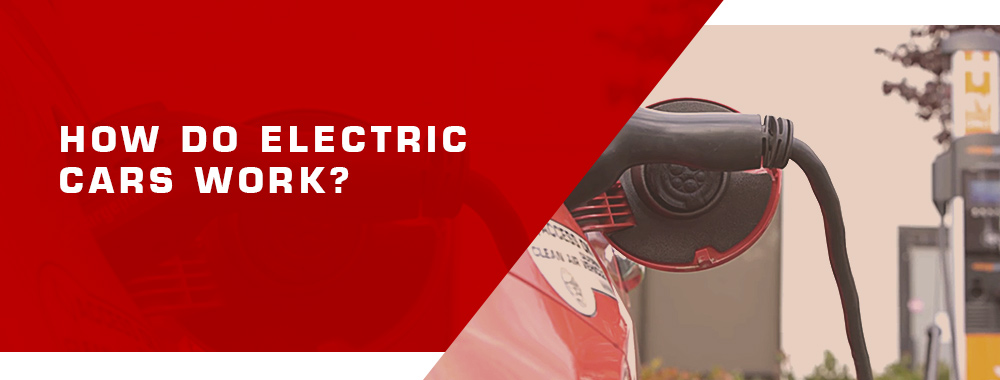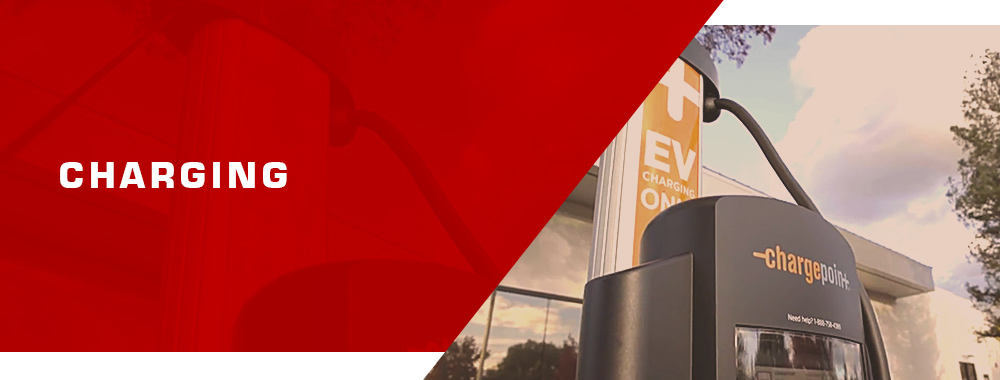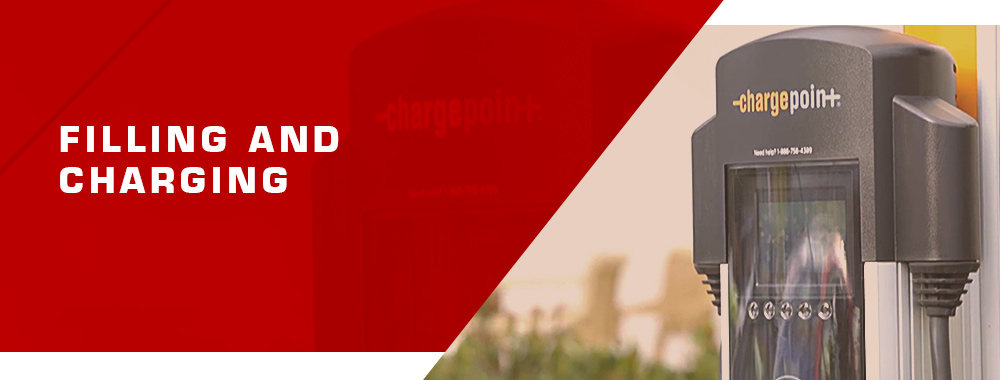There is a lot of talk now about electric cars and the advantages they offer. Compared to competitors with gasoline or diesel engines, they have much lower noise levels and lower operating costs.
Sources say that more than a dozen state governments, led by California and its multi-billion dollar buying power, are pushing auto companies to create all-electric vehicles. The future is in electric cars.

All-electric vehicles, also called battery electric vehicles (or, simply, electric vehicles), have an electric motor instead of a combustion engine. The vehicle uses a large traction battery to power the electric motor and must be plugged into an outlet or charger, also called electric vehicle supply equipment (EVSE). Because it runs on electricity, the car does not emit exhaust fumes from a tailpipe. It also lacks the typical components of liquid fuel vehicles, such as the fuel tank, fuel line, and fuel pump.
What are the key components of an electric car?
Electric motor
The electric motor is used to drive the wheels of the car, and if two motors are used, one on each axle, then electric cars can also have all-wheel drive. For example, the Jaguar I-Pace has two electric motors and all-wheel drive, while the Nissan Leaf has one electric motor and front-wheel drive.
Two different types of motors are mainly used in today’s electric cars — asynchronous AC motors and permanent magnet motors.
Their main differences:
- Asynchronous AC motors use multi-layer steel sheets with buried peripheral conductors. They are better suited for high-performance electric vehicles because they can produce more power.
- Rare-earth metals are required for permanent magnet motors. As a rule, they are more efficient.
They consume about the same amount of power, and the AC and DC motors use the latest technology to improve performance and efficiency.
For its Model S and Model X, Tesla uses an asynchronous AC motor. Both are big, high-performance cars. For the Model 3, they switched to a permanent magnet motor, which is lighter and more efficient.
Battery
Batteries are usually positioned low in the car and in some cases almost near the ground. This helps keep the vehicle’s center of gravity low and thus helps it stay stable when cornering. However, batteries are heavy, so most electric cars weigh much more than conventional cars. For example, the Audi e-tron weighs 2,490 pounds and the Ford Fiesta weighs 1,620 pounds.
In the early days of electric cars, these batteries were lead-acid, but modern electric cars use lithium-ion batteries, which can store much more energy.
Electric cars also usually have an auxiliary battery to power the car’s electrics. This means that the infotainment system and car headlights will still work if you run out of power from the main battery.
Electric cars are more affected by the weather than any other type of car. In cold weather, you are likely to see significantly less range from your vehicle than in the warmer months.
Regenerative braking
Electric cars are able to recover some of the energy normally lost during braking and return it to the main battery to increase range. In practice, this gives you the sensation of the car slowing down as soon as you press the accelerator pedal. Most electric cars allow you to adjust the degree of this effect.

Most all-electric cars and hybrids need to be plugged in to recharge either from a standard household outlet, a wall charger, or a quick charger, which you will most often see at service stations on highways or in large cities. In the future, you won’t have to plug in your electric car to charge it: instead, you’ll drive up to a special pad, and the car will be charged wirelessly [04] using a process known as inductive charging.
So, Leviton is the brand for you if you are looking for a quality and stable electric car charger. We have compared their products with some of the other popular brands on the market and found that they outperform in both stability and quality. Be sure to check out our next article where we will be discussing specific models from Leviton’s line-up so that you can make an informed purchase.
Control unit
Electric cars also have a control unit that determines how much energy from the batteries to transfer to the electric motor. If the controller worked like a light switch and was always on or off, it would be almost impossible to maintain your speed. To help with this, the controller feeds power to the electric motor thousands of times per second, depending on the position of the accelerator pedal, to simulate the feeling of driving a regular car. Even so, electric cars usually accelerate very well, and that’s because all of the car’s torque — or pulling power — is available as soon as you put your foot down.
Fuel cell vehicles
Some electric vehicles get their electricity from hydrogen fuel cells, and these vehicles are commonly referred to just as fuel cell vehicles. There are now many different types of hydrogen fuel cells, but most work on the same principle of combining hydrogen and oxygen to produce electricity and water. The Toyota Mirai and Hyundai Nexo are two examples of hydrogen fuel cell vehicles.
What distinguishes an electric car from a gasoline or diesel-powered car?
Transmission
Plug-in electric vehicles also do not require a transmission. This is because, unlike internal combustion engines, 100% of the torque of an electric motor is available at very low speeds, so there is no need for multiple gears. In internal combustion engines, the necessary torque is available only in a narrow range of engine speeds. Therefore, gears are needed to keep the engine rpm at the level needed for power and efficiency. Modern electric vehicles use one single reduction gear. From zero to maximum speed, they are always in the same gear. This is how battery electric cars work.
The Chevrolet Blazer EV is an example of a battery electric car that uses one single reduction gear, which means it does not require a transmission. Additionally, in terms of powering the vehicle, charging Chevrolet Blazer EV just like any other electric vehicle.

The refueling process for electric cars is fundamentally different from refueling cars with a conventional engine.
In cars with a diesel or gasoline engine, the owner goes to a gas station and fills the tank with liquid fuel.
In the case of electric cars with a battery, the owner plugs it into the power grid at certain charging points to recharge the battery. Depending on the type of charging station and the size of the battery of the electric car, it can take anywhere from half an hour to 8 hours to charge the car! This depends on the type of charging station. The battery life of an electric car battery also depends on many factors. Most people charge their electric car daily from a Level 2 charging station and leave home every day with a fully charged battery.
By the way, did you know that a charging station refers to a device that is permanently placed? A portable device is another name for a mobile device. It’s all about portable chargers for EVs, as stated in our article. We’ve hand-picked the finest versions based on your needs.
Harmful emissions
According to sources, although electric cars do not emit greenhouse gases, they run on electricity. The process of producing electricity from fossil fuels is accompanied by CO2 emissions.
In general, electric cars have low lifetime emissions compared to conventional cars with internal combustion engines. In the future, the proportion of green energy, such as the use of solar panels, will also increase, further reducing the number of harmful emissions from electric vehicles.
Conclusion
To summarize, the basis of an electric car is that the owner plugs it into the car to charge the battery pack, which drives an electric motor that drives the wheels from a single-speed gearbox. For cars with a traditional engine, the owner fills the fuel tank, which drives the internal combustion engine, which transfers power to a multi-stage transmission, which in turn drives the wheels. This requires thousands of moving parts that need lubrication and possible replacement, which is much different and more complicated than the simple and more efficient transmission of an electric car.
Just switched to a BEV and the difference in driving experience is night and day compared to my old gas car. But, I’m worried about battery life in the long term. Any tips on maximizing battery longevity?
To extend your battery’s life, avoid charging it to 100% every time. Stick to around 80% unless you need the full range. Also, try to avoid letting it drain completely.
Can anyone recommend a reliable and budget-friendly EV for city driving? I’m new to this and overwhelmed by the options.
Check out the Nissan Leaf. It’s affordable, has decent range, and is perfect for city driving. Plus, it’s got some great tech features.
Installed a home charger for my EV and it’s a game changer! No more queues at public stations. Anyone else considering this?
Definitely considering it. Tired of the unpredictability of public charging. How was the installation process for you?
Does anyone know if cold weather significantly affects EV battery performance? I’m moving to a colder region and curious about the impact.
Yes, cold weather can reduce range. But pre-heating your car while it’s still plugged in helps a lot. Also, parking in a garage makes a difference.
Heard about a new software update that improves EV battery efficiency. Anyone updated yet and noticed a difference?
Just updated, and I’ve noticed a slight improvement in range. It’s subtle, but every bit counts!
Love my EV, but range anxiety still hits me on longer trips. How do you all cope with it?
Planning is key. I always map out charging stations along my route. The more you do it, the less anxious you become.
Pro tip: Coasting and regenerative braking can really boost your EV’s range. Try it out and see how much you can save on power!
Excited to see more high-performance EVs hitting the market. But are they really as eco-friendly as they claim, given the manufacturing process?
They’re not perfect, but still better for the environment compared to gas cars, especially if you use renewable energy to charge them.
To new EV owners: Don’t forget to maintain your tires! Proper inflation can improve your range and overall performance. Small things make a big difference.